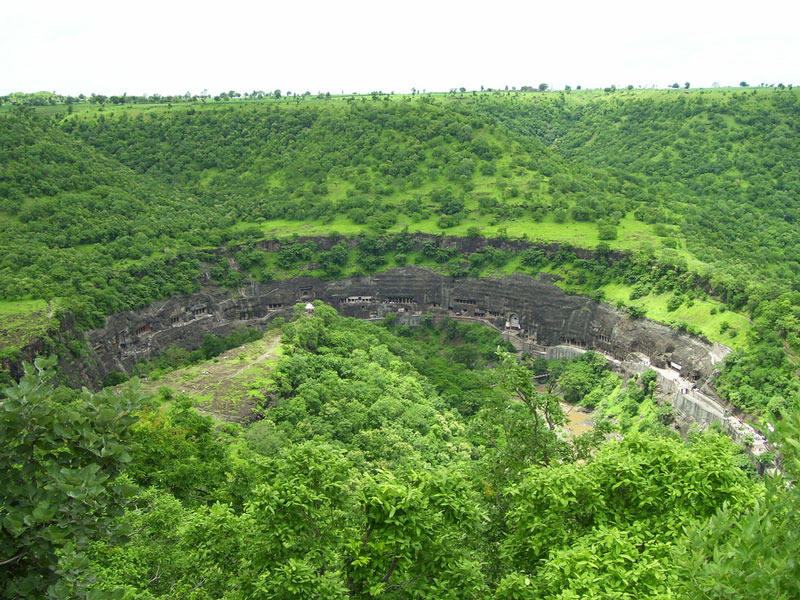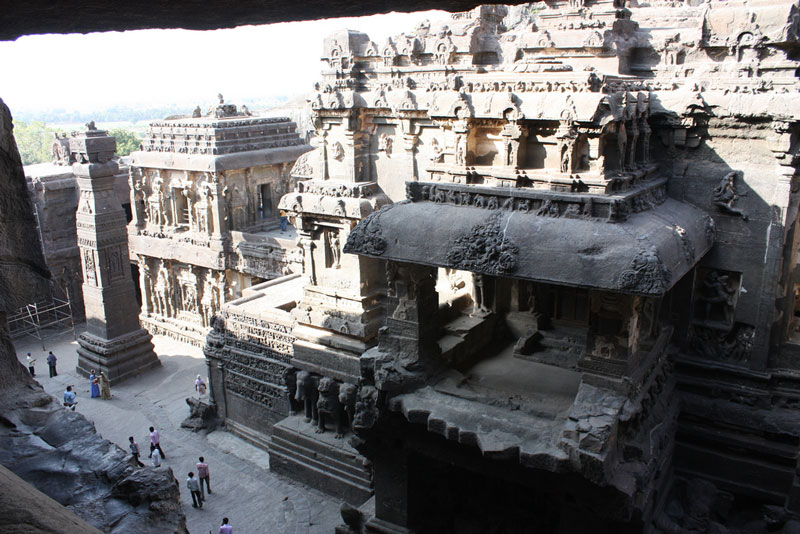Visitor Information
- Famous for: Caves, Buddhist Shrines, Significant Temple for Hindus (Jyotirlingam), Sightseeing, Photography, Historic Significance, Study of carvings, Experience Seeking and Wandering, Connoisseurs.
- Entrance Fee: Entry fee is Rs 10 for Indian visitors while Rs 100 for foreigners.
- Visiting Time: From 9AM to 5PM, it is pretty much open throughout the day inviting the wanderers whenever they feel like getting a breath of fresh yet archaic air.
- Visiting Duration: Between 2 to 3 hours is the average time of duration that you might spent here. But it totally depends upon personal interest and taste.
In the Indian state of Maharashtra, the city best remembered in the deeds of the Mughal Ruler Aurangzeb but carrying the essence of Marathawadas in its soil, the city of Aurangabad is a nucleus for all kinds of outstanding historical architectural displays and monuments. Malik Amber who is credited to being the founder of Aurangabad in the year 1610, more than four hundred centuries earlier, can still be felt when you drive through the mystic roads of Aurangabad. Close to its toes, lie the famous crag lacerated Buddhist Shrines of Aurangabad caves which are total twelve in number of whose citation also exists in the magnificent Kanheri caves in the Chaitri. They are one of the most magnificent artificial displays of rock-cut Buddhist shrines.
Traveler Tips
- There is so much to explore here for the ones who have interest in historic architectural beauty and facts. Come here when you have ample time to be able to imbibe it fully.
- Here one of the 12 (from all over India) jyotirlingams exist which is of utmost importance to Hindus. Make sure you pay your respects here and strike off one of the 12.
- Belts, shirts, photography and of course shoes are not allowed inside the temple. So, make sure you keep these things inside your travel/tour car and then enter inside the temple.
- From atop the hills of the Aurangabad caves, you can have the stunning view of miniature Taj Mahal or Bibi ka Maqbara. Make sure you don’t forget to complete that trek and catch the beautiful glimpse and the surroundings.
- Don’t forget to note the precision and harmony with which Hindu and Buddhist inscriptions have been carved side by side on these walls, coexisting beautifully and peacefully.
- Take some time to go through all 12 of the caves and do not leave any one out. The inscriptions and peculiar little details on each are worthy to take note of.
Things to Do
- Visit the Hindu Jyotirlingam Temple.
- Pay you respects at the Buddhist shrines.
- Pay close attention to the inscriptions and carvings.
- Trek to the top of the hills and get a sight of the Bibi ka maqbara.
- Get abhishekams done by pandits on the Shivalingam.
Availability of Guides
There are guides available on enquiry near the abhisekam counter.
Best Time to Visit
The months from October to March are your best options to come here.
How to Reach
Aurangabad caves can be accessed by reaching the city of Aurangabad which is easily connected to all the major cities by the roadways. Catch a bus or a cab to reach here. The nearest airport is at Aurangabad itself.
Interesting Facts and Trivia About the Aurangabad Caves
- These heritage monuments are currently under the protection by the Archaeological Survey of India.
- There are three separate sections of these hills segregated according to the location of each.
- Tantric or black magic touches can be seen across the inscriptions in these caves. This is the most striking feature of the Aurangabad Caves.
- These caves also served as the shelter inns for the tired travellers trading along the trade routes of Pathan.
- These are completely man-made caves, that means they were carved out of basalt salt rocks artificially.
- The oldest of the 12 are caves 1 and 3.
- Cave 1 is Vihara, Cave 2 is chaitya, Cave 3 is Chaitya Griha of the Hinayan order. The remaining are of the Kalachuri Dynasty.
- The front facade of the verandah embellished in cave number 7 has extremely intricate and stunning representations of a panel of prayers of Avalokitesvara and Bodhisatva on both the sides of the ingress to the sanctum.
- The prayers of Avalokitesvara is specifically a lot more intricate and detailed than its counter parts found in the Ajanta and Ellora caves.
- Also, the prayers of the Avalokitesvara represents the Bodhisatva Padmapani as ‘Saviour of Eight Humongous Dangers’ (Fire, Demon, Elephant, Monkey, Lion, Shipwreck, Theft, Snake).
- The remaining caves are considered to be of lesser relevance because of unfinished excavations.
- The remaining significant sculptural arenas are of Tara, the primary consort of Avalokitesvara, depicted to the east of central shrine door along with a group of six she-musicians on the east facade of the principal sanctum.
- The second part is more popular and usually supposed to be the representative sculptural panel of the Aurangabad Caves. The main figure at the center is in a dancing attitude, with the five others playing different musical instruments.

Nearby Attractions
- Ellora caves
- Ajanta Caves
- Grishneshwar Jyotirlinga Temple
- Bibi ka Maqbara
- Bhadra Maruti
- Dargah of Pir Ismail
- Siddharth Garden
- Panchakki (Water Mill)
- Jayakwadi Dam
- Chini Mahal
- Alamgir Dargah
- H2O water park
- Goga Baba Hill
- Valley of the Sufi Saints
- Mhaismal Hill Station
Nearby Restaurants
- Rama International
- Latitude Restaurant
- Hotel Ambassador Ajanta
- Balbeer’s Multicuisine Kitchen
- Foodcraft
- Rollacosta
- Tara Pan Centre
- Hotel Kailash


